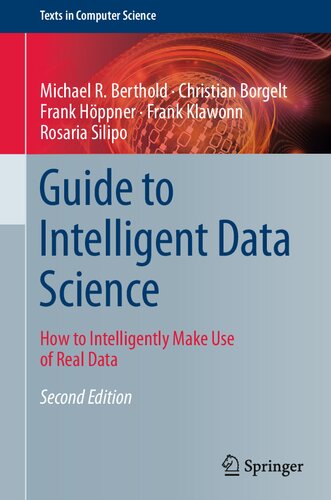

Most ebook files are in PDF format, so you can easily read them using various software such as Foxit Reader or directly on the Google Chrome browser.
Some ebook files are released by publishers in other formats such as .awz, .mobi, .epub, .fb2, etc. You may need to install specific software to read these formats on mobile/PC, such as Calibre.
Please read the tutorial at this link: https://ebookbell.com/faq
We offer FREE conversion to the popular formats you request; however, this may take some time. Therefore, right after payment, please email us, and we will try to provide the service as quickly as possible.
For some exceptional file formats or broken links (if any), please refrain from opening any disputes. Instead, email us first, and we will try to assist within a maximum of 6 hours.
EbookBell Team

4.7
46 reviewsMaking use of data is not anymore a niche project but central to almost every project. With access to massive compute resources and vast amounts of data, it seems at least in principle possible to solve any problem. However, successful data science projects result from the intelligent application of: human intuition in combination with computational power; sound background knowledge with computer-aided modelling; and critical reflection of the obtained insights and results.
Substantially updating the previous edition, then entitled Guide to Intelligent Data Analysis, this core textbook continues to provide a hands-on instructional approach to many data science techniques, and explains how these are used to solve real world problems. The work balances the practical aspects of applying and using data science techniques with the theoretical and algorithmic underpinnings from mathematics and statistics. Major updates on techniques and subject coverage (including deep learning) are included.
Topics and features: guides the reader through the process of data science, following the interdependent steps of project understanding, data understanding, data blending and transformation, modeling, as well as deployment and monitoring; includes numerous examples using the open source KNIME Analytics Platform, together with an introductory appendix; provides a review of the basics of classical statistics that support and justify many data analysis methods, and a glossary of statistical terms; integrates illustrations and case-study-style examples to support pedagogical exposition; supplies further tools and information at an associated website.
This practical and systematic textbook/reference is a need-to-have tool for graduate and advanced undergraduate students and essential reading for all professionals who face data science problems. Moreover, it is a need to use, need to keep resource following one's exploration of the subject.